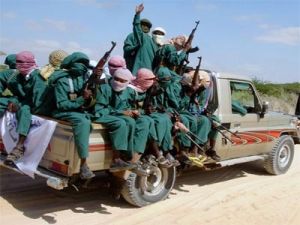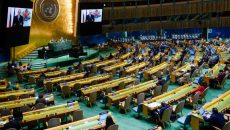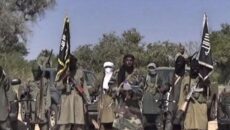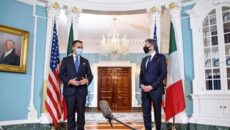In the early nineties, right after the ouster of dictator Siad Barre (1991), I took a couple trips to Somalia and Kenya. That makes it a nice, round twenty years ago. However, even back then, the border between Somalia and the inner regions of Kenya was dotted with camps full of Somali refugees. What drove them there was an outbreak of famine that occurred right when the clan wars — which exploded following the collapse of the central government — reached their peak.
Today, it’s at the brink of apocalypse: in the area struck by famine—the Horn of Africa, which includes vast portions of Somalia, Kenya, Ethiopia and Djibouti—12 million people have been devastated by lack of food, and the latest estimates speak of some 750,000 likely victims. A fourth of the Somali population are refugees or seeking asylum in neighboring countries. In Kenya, the country that should be leading the way in aiding the Somalis, 10% of the population are no longer able to autonomously fulfill their basic need for food. But if we look at recent history, we discover that in Ethiopia there have been two previous famine crises: one in 1973, the same year as a coup d’état against Emperor Haile Selassie (later deposed in 1974), and another one in 1984, when the war between Colonel Mengistu and Tigre rebels was at most violent stage. And when it comes to Somalia, we need to ask ourselves this: how great a burden are two consecutive years of drought compared to twenty consecutive years of civil war?
The occasional drought resulting in deadly famine is a man-made phenomenon. This is particularly clear in Somalia. In 2009, the movement called Al Shabab (“The Youth”, because it was originally the Islamic Courts Union’s youth wing, now believed to be some eight or nine thousand armed fighters strong) drove the United Nations and all other humanitarian organizations out of the country.
This was a political decision; in order to provide effective assistance to the population, they would have needed free access to the villages, autonomy in managing and distributing aid, and full freedom of movement. The Shabab considered it a threat to their power and therefore expelled them all. Even earlier, however, these Islamic guerrillas were regularly siphoning off resources from the NGOs and the population itself: every organization had to pay a “registration fee” of between four and ten thousand dollars and a “project fee” amounting to 20% of the value of the initiative, be it digging a well or building a hospital.
The result: the areas hardest hit by famine are the same ones under their control, while almost unscathed is Somaliland, the former British Somaliland, the northern area that was part of the British Empire from 1884 to 1960 and became independent after the fall of Siad Barre. It now sends aid to the southern area of Somalia – the very part that has been war-torn for two decades.
Another consideration: in the Corruption Perceptions Index’s analysis of 180 countries, Kenya ranks 147th and Somalia ranks 180th, in last place. It has been calculated that, on average, a typical Kenyan citizen pays 16 bribes a month in order to practice his profession or receive the most common services. One more example: in only two years (2004-2006), Kenyan president Mwai Kibaki spent 15 million dollars on Mercedes for his personal fleet of cars. And even now, Kenya’s civil rights organizations are warning people to keep their eyes open, because — given the aid and assistance “business” — famine is an excellent occasion for further swindles.
2008 saw the establishment of the Ministry for the Development of Arid Lands, which a few weeks ago paradoxically appealed to the Anti-Corruption Commission to find out what happened to the four million dollars that were earmarked for the areas struck by drought yet never made it to their destination.
Basically, famine in Africa isn’t like a hurricane or an earthquake. In it we see the hand of man far more than the hand of nature. And while, year after year, extreme poverty becomes a predominantly African problem, the reason doesn’t lie in drought, but in the fact that there is more war and more corruption in Africa than there is in any other part of the globe.
 A group of “Al Shabab” Islamic militants.
A group of “Al Shabab” Islamic militants. 



Excellent beat ! I would like to apprentice while you amend your web site, how could i subscribe for a blog website? The account aided me a acceptable deal. I had been a little bit acquainted of this your broadcast offered bright clear idea
Much appreciated for the information and share!
This committee help to many people. You can use their services in your work. You can read research papers about all details of their work.